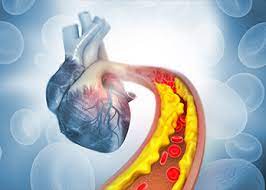
Type 2 diabetes: Understanding Australia’s fastest growing chronic condition

Shaheennews – “Imagine the fat in your body is like the food that you store in your pantry.”
This is how Merlin Thomas, a physician scientist from Monash University, begins when I ask him to explain how type 2 diabetes works.
“Each week, you bring home your shopping and put it in the pantry. This way you’ve got food ready for when you need it during the week.
“Now, imagine a week that you get invited out a lot — so you eat out most nights. By the end of the week, there’s a little more food in your pantry than normal because you haven’t used it up. So, it just sits there.”
Over time, he explains, the food in your pantry starts to pile up; the shopping continues to arrive, but you’ve stopped using the supplies that you’ve already bought.
“When the next batch of shopping arrives, you have nowhere left to put it … so you look around and think, ‘I’ll just stick it in the hallway or in the bathroom, and I’ll get rid of it later’.
“The problem with that is that it starts to interfere with the functions of the hallway and the bathroom — causing all sorts of problems.
“That’s essentially what type 2 diabetes is. It’s fat stuck in the wrong place.
“That fat that interferes with normal functioning, which, in the case of diabetes, is healthy blood glucose control.”
Diabetes: A snapshot
According to Diabetes Australia, around 1.7 million Australians have diabetes, and a further 2 million are at high-risk of developing itThe full cost of diabetes to the Australian economy is estimated to be as high as $14 billion per yearThe World Health Organisation predicts diabetes will be the seventh leading cause of death by 2030
The challenge of diabetes
Putting aside the pantry metaphor for a moment (and how type 2 diabetes comes to be), it’s important first to understand what diabetes is: a chronic condition that stops the body from producing and/or using insulin.
Insulin is an essential hormone produced by the pancreas. It regulates blood sugar levels by telling the cells of the liver, muscles, and fat to move glucose out of blood and into cells, where it is broken down and used for energy (or stored for later use).
When a person has diabetes, their body is unable to pull glucose out of their blood and break it down. This results in high blood glucose levels, which can lead to serious complications such as heart attack, stroke, amputation, blindness, kidney failure, depression and nerve disease.
“Someone with diabetes at the age of 60 will lose roughly six years of their life compared to someone without diabetes,” Professor Thomas says.
“Most of that shortening of their lifespan is due to heart attacks and strokes.”
There are a number of reasons why a person does not produce enough insulin, or the cells in their body stop responding to insulin properly (what’s known as insulin resistance).
Type 1 diabetes is an autoimmune condition where a person’s immune system destroys their insulin-producing cells, meaning they require daily insulin injections to survive. Type 1 diabetes usually appears in childhood or early adulthood, and accounts for around 10 per cent of all cases of diabetes.






